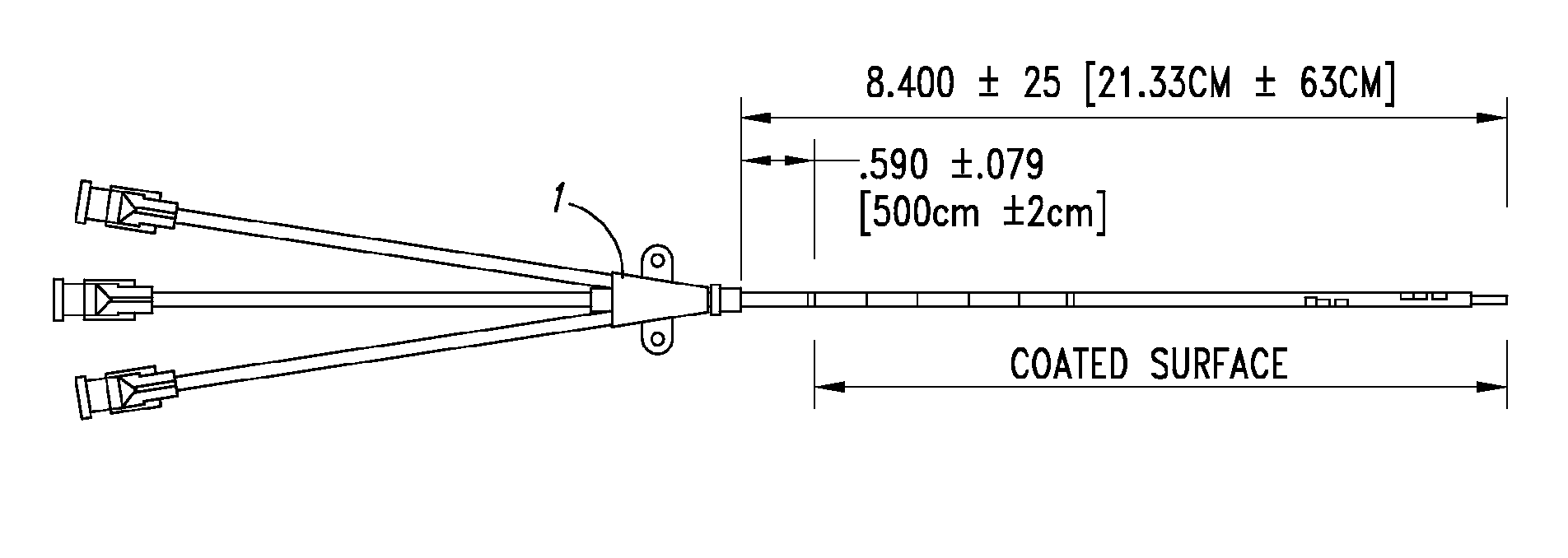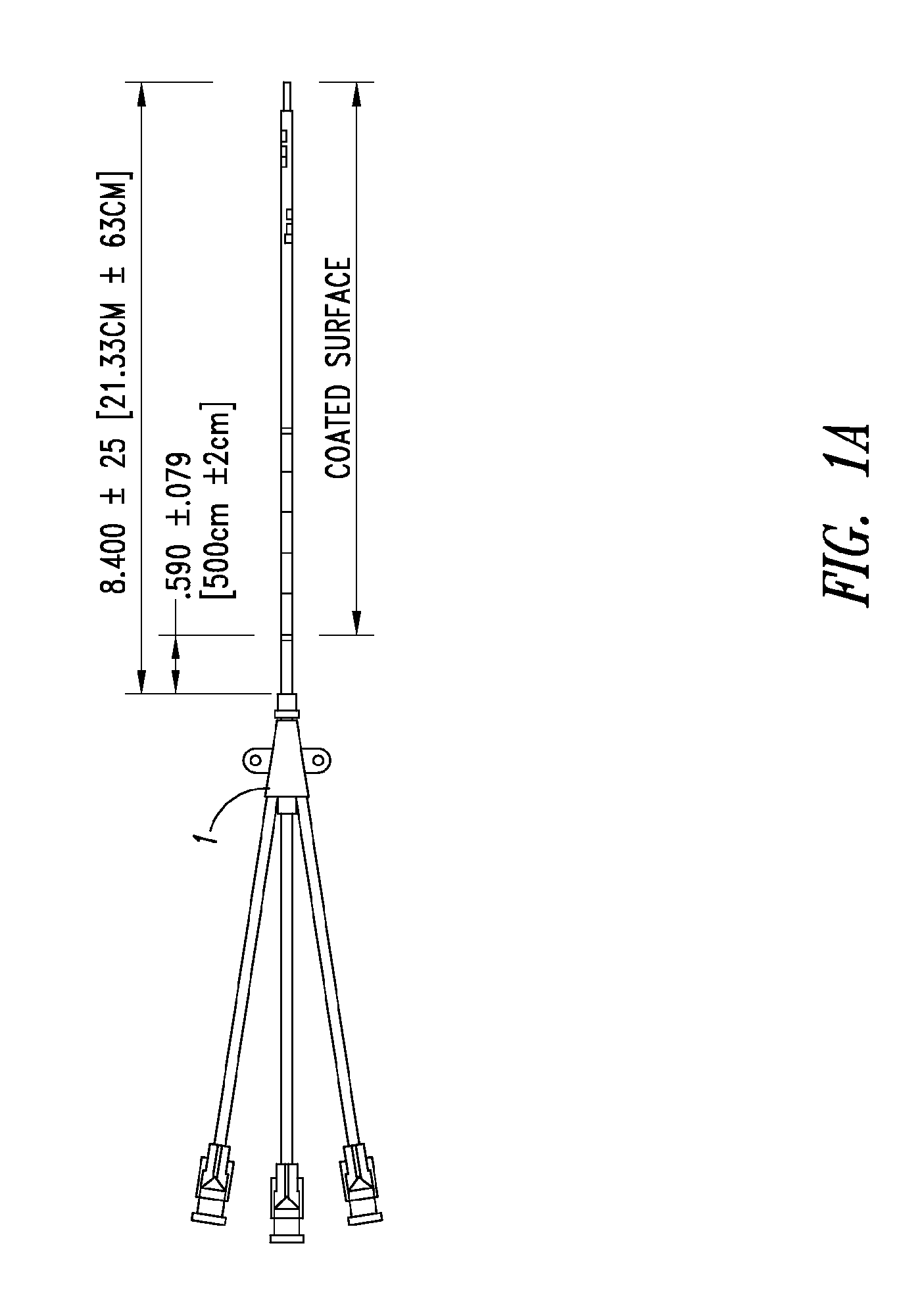Anti-infective catheters
a technology of anti-infective catheters and compositions, applied in the direction of catheters, disinfectants, biocides, etc., can solve the problems of increasing morbidity for patients, and affecting the treatment effect of patients,
- Summary
- Abstract
- Description
- Claims
- Application Information
AI Technical Summary
Benefits of technology
Problems solved by technology
Method used
Image
Examples
example 1
Preparation of Coated Central Venous Catheters
[0380]CVC's were cleaned from their proximal ends of the body to the distal tips by wiping with VWR SPEC-WIPE® 7 Wiper that was wetted with 75 / 25 IPA / MEK. The catheters were allowed to dry for a minimum of 60 minutes at ambient temperature.
[0381]The catheters were then loaded onto the angle brackets that were used as fixtures for coating. The coating cup was placed on the catheter, and the angle bracket was loaded onto the coating machine. A coating solution prepared in accordance with the invention was added to the coating cups and the catheters were coated. During the process the inner lumens of the catheters were air purged to ensure that the lumen and ports are free from coating solution occlusion.
[0382]The coated catheters were removed from the coating machine and dried at 85±5° C. for 20 minutes in a vented oven to remove residual solvents to acceptable levels. The coated catheters were removed from the oven and cooled. The coated ...
example 2
Drug Elution from Coated Catheters
[0386]The in vitro elution profile of 5-FU from the CVC coating prepared as described in Example 1 was measured. The elution was performed by immersing 4-cm sections of coated catheter samples in 15 mL of phosphate buffered saline, pH 7.4 (PBS) at 37° C. The samples were placed in a rotating apparatus to provide agitation. The elution medium was sampled at selected time points and analyzed by HPLC. As shown in FIG. 3, there was a gradual elution of 5-FU from the catheter coating, with approximately 50% of drug released at day 7 and 90% release at day 28.
example 3
Stability of Coated Catheters
[0387]Stability studies using coated catheters prepared according to Example 1 were performed to establish a shelf life / expiration date for these catheters. Testing evaluation for the drug component includes drug identity, drug loading and in vitro elution. Evaluation of the coating polymer includes visual inspection, dry adhesion and wet abrasion / wet peel testing.
[0388]The catheters were tested for stability using both real time (25° C. / 60% RH) and accelerated conditions (40° C. / 75% RH). Based on the analysis of the data, with a 95% confidence, at 24 months at 25° C. and 60% RH, (1) the total content of 5-FU of the catheter would not be expected to drop to less than 92.92% of the initial value, (2) drug purity is expected to remain above 95.25%, and (3) the defect rate in coating dry adhesion and wet peel / wet abrasion test is expected to be below 5%.
PUM
 Login to View More
Login to View More Abstract
Description
Claims
Application Information
 Login to View More
Login to View More - R&D
- Intellectual Property
- Life Sciences
- Materials
- Tech Scout
- Unparalleled Data Quality
- Higher Quality Content
- 60% Fewer Hallucinations
Browse by: Latest US Patents, China's latest patents, Technical Efficacy Thesaurus, Application Domain, Technology Topic, Popular Technical Reports.
© 2025 PatSnap. All rights reserved.Legal|Privacy policy|Modern Slavery Act Transparency Statement|Sitemap|About US| Contact US: help@patsnap.com



